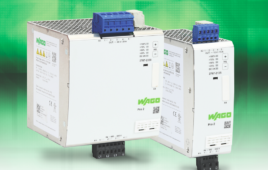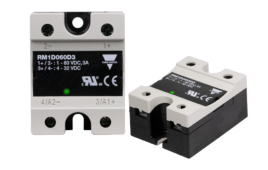When it comes to manufacturing-related accidents, the images that come
most readily to mind are mishaps with industrial machines, chemical
spills, or fires caused by the processing of highly combustible
materials. But one of the most commonly occurring industrial accidents
involves an all-too-common fault with the very power needed to operate
any sort of manufacturing operation.

What is arc flash?
Arc
flash is the term used to define the release of energy caused by an
electrical arc. Temperatures associated with arc flash incidents can
reach as high as 35,000 degrees F–four times the temperature of the
sun’s surface. More disturbing is the fact that hospitalization reports
related to arch flash incidents occur five to ten times a day in the
U.S. alone. If these are the reported cases with serious injuries, how
many more times a day might arc flash occur in which, fortunately, no
one is harmed?
Beyond extreme heat, arc flash also presents
pressure, auditory, projectile and inhalation hazards. Pressures
associated with some arc flash incidents have been great enough to blow
down nearby concrete walls.
How to avoid arc flash.
To mitigate the risk of arc flash occurring in your facility, a number of steps can provide a high degree of safety:
* Do all maintenance repair work on de-energized equipment (a requirement of OSHA 1910.333).
* Perform operation and/or racking only with the electrical panel door closed.
* Operate equipment remotely.
*
Use arc-venting switchgear (arc flash will typically exit via the
weakest part of the structure in which the electrical components are
housed, which is typically the front door of the unit). Arc fault
venting allows arc flash energy to exit in a specific direction away
from where personnel are likely to be.
* Set protection devices,
such as differential relays, to react quickly. However, this may not be
optimal in all cases as such relays can cause unwanted tripping due to
minor overloads.
* Adapt settings during exposure. Establish sensor
setup so that when someone comes close to the electrical unit, sensors
will adjust to deliver that fastest possible tripping.
* Use current
limiting fuses or circuit breakers, as these can interrupt in as little
as one-quarter of a cycle, but may not operate correctly at arc fault
levels.
Even with all these safety steps available, there
will still be occasions when personnel will be required to interact
with machinery in circumstances that don’t fit these parameters. In
those cases, other precautions are required.
Official arc flash hazard notices.
Regardless
of when or how qualified internal or external personnel will interact
with electrical equipment, facility management is required to be
knowledgeable of Arc flash hazards and provide the proper PPE (personal
protective equipment) required to protect workers and communicate the
risks.
2008 NEC article 110.16 states that a flash protection
notice should be placed on any electrical equipment that requires
inspection and maintenance. The notice can include arc flash boundary
details, PPE category requirements and potential shock hazard when the
cover is removed. However, current NEC requirements do not state that
such specific details be listed on the notice. All that is required is
the basic notice of “Danger: Arc Flash Hazard Exists; Appropriate PPE
Required.” Specific arc flash details have not been mandated on these
notices, as these numbers will change over the course of the day based
on use of the electrical systems.
Gerald Brewer, senior
technical trainer at Siemens, says, “There is now a suggestion before
the NEC to list the numbers indicating the worst possible scenario in
order to ensure use of proper protection.”
OSHA requires an
employer to determine the presence of a hazard, require appropriate
PPE, communicate decisions around PPE, and ensure on-hand PPE fits
personnel. But OSHA’s requirement does not directly address arc
flash–it applies to any hazard in the workplace that an employee may
face.
NFPA arc flash requirements are a bit different.
NFPA
70E 2004 130.3, on the other hand, specifically requires a flash hazard
analysis be performed to protect against arc flash and to determine the
arc flash boundary. Though it does not directly enforce the NFPA
standard, OSHA does recognize it as an accepted industry practice and
states that any company following NFPA 70E 2000 edition or later is in
compliance with OSHA standards.
“If you have an arc flash accident,” says Brewer, “OSHA will ask why you did not follow NFPA’s accepted industry practice.”
Arc flash safety compliance delivers a number of benefits.
There are many obvious benefits of arc flash safety compliance:
* reduces risk of employee injury or death
* provides safety info for sub-contractors
* limits equipment damage
* increases system reliability for better uptime for production
* yields a potential reduction in workers comp and insurance claims
As
such, there’s really no good reason not to do it, though many
manufacturing sites tend to put off compliance since it is not required
to operate the facility. To bring your facility in compliance with
regulations, you must follow NFPA 70E guidelines and conduct an arc
flash study.
You’ll need to know this to manually calculate your arc flash hazard.
If you wish to calculate your arc flash hazard manually, the following information is required:
* an up-to-date one-line diagram to verify where all power is coming from.
* a short circuit study MVA and source MVA ratings, equipment and cable impedance, cable length and motor contribution.
* a coordination study to know how fast protective devices will react to level of fault you may experience.
Determining appropriate PPE is key.
Reference
sources are available through IEEE and NFPATBD to aid in conducting the
calculations for analysis and to determine appropriate PPE. You can
perform the calculations yourself, but there are a number of variables
associated with current, type of equipment, use and potential fault
varieties. Software designed for such calculations makes the job much
easier. Organizations offering such software include: Cooper Bussmann,
Easy Power, eTAP, Ferraz Shawmut, IEEE, Littlefuse, and SKM, among
others.
Hiring a consultant firm to help you.
As
an added step toward achieving proper compliance, employing a
third-party vendor to conduct the analysis will ensure that the
calculations are performed correctly, proper documentation is provided,
and that your facility is in compliance and personnel are safely
protected.
::Design World::
Filed Under: INDUSTRIAL SAFETY SYSTEMS, ELECTRONICS • ELECTRICAL





Tell Us What You Think!